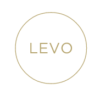Maybrooks note: Time to dust off the resume? We found these tips on Levo and while they are geared to new graduates, we think there working moms looking for more flexibility and moms looking to re-enter the workforce can leverage them to make their own resumes standout. Raised $100,000 for your school? It’s important information to communicate in your resume. In general we love offering tips geared to new grads — you get all the new thinking out there and get to enhance it with all the experience you already have.
1. Add stats.
Numbers speak louder than words. Showing your impact on an organization—whether it’s through your involvement in college clubs or in your internships—can illustrate your abilities to make change and improvements more clearly than descriptive words.
Marilyn Santiesteban, assistant director at Texas A&M University’s Bush School of Government & Public Service Career Services tells new graduates to quantify their experience, education, or skills by using “accomplishment statements” (you grew your coding club’s membership to 200 students, or helped raise more than $100K for your university’s dance marathon) which show hard measures.
Sometimes, you don’t have a specific number or percentage to call out. In that case, Santiesteban recommends the soft measure route. For example, perhaps at a summer internship you “noticeably decreased the number of customer complaint calls by creating FAQ document that was shipped with each product.” Sounds pretty good, doesn’t it?
2. Give the design a second look.
How many times have you heard the words “personal branding” lately? A lot, we’d venture to guess. Even though the phrase is most often associated with social media, your resume can also be used to help illustrate your personality, especially if you’re hoping to work in a creative field.
Chad Reid, communications director at JotForm, says, “The biggest, and most effective change I’ve implemented in my resume has been making my application visually appealing. I’m in marketing, so this tip really helps reinforce why I’m good for the jobs: I can differentiate myself.”
He’s not saying you should turn your job-hunting materials into works of art. He’s simply saying that small touches, like adding a secondary color or experimenting with a different font can help you stand out from the pack.
“Humans are visual creatures and will remember a candidate who took the time to make their resume easy on the eyes,” Reid says. If you need help determining whether or not a new design element is distracting or complimentary to your resume, ask friends and mentors for their opinion.
3. Remove your address if you’re applying out-of-state.
If you’re worried your resume might get skipped over because of your far-away contact information, Santiesteban suggests including only your phone number and email address. And while you can always include a future address if you know where you’ll be relocating, “Since we’re moving toward leaving addresses off resumes in general, it’s never something you have to include,” she adds. (Maybrooks note: Also smart if you’re applying to a fully remote/work from home position.)
4. Edit your skills to match the job posting.
Of course you want to tailor your application to meet the specific requirements listed by a hiring manager, so for each job you want to apply to, Santiesteban suggests creating a two-column chart, one with the job’s requirements and another with your qualifications for that job. Then, go back to your resume and tweak your skills and experiences to include as many qualifications that match the job description as possible.
If your resume includes a lot of skills and experiences not mentioned in the job posting, Santiesteban recommends removing them. You want to target your resume as closely as possible to that specific job posting.
5. Try to identify an “in” within the organization.
Santiesteban’s final tip is gold. Before you send off your application, Santiesteban says to double-check your network (LinkedIn, etc.) to see if you have a connection to someone within the company who may be willing to pass along your materials internally.
“Most organizations pay some sort of a referral bonus to employees when people they recommend are hired,” she says. “This is a huge advantage to both parties—the referring employee gets a bonus, and the applicant can almost always be sure their resume will be viewed by a real person.”
She leaves us with two compelling facts: Referrals constitute 6.9 percent of all applicants—and 46 percent of all hires at top performing firms.
 This article was originally published by our content partner Levo League. Levo.com connects you with the people and learnings you need to advance your career.
This article was originally published by our content partner Levo League. Levo.com connects you with the people and learnings you need to advance your career.
Photo: Hinterhaus Productions / Getty Images





